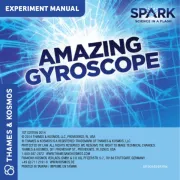Horizon FCJJ-22 Handleiding
Horizon
Niet gecategoriseerd
FCJJ-22
Bekijk gratis de handleiding van Horizon FCJJ-22 (2 pagina’s), behorend tot de categorie Niet gecategoriseerd. Deze gids werd als nuttig beoordeeld door 6 mensen en kreeg gemiddeld 4.5 sterren uit 3.5 reviews. Heb je een vraag over Horizon FCJJ-22 of wil je andere gebruikers van dit product iets vragen? Stel een vraag
Pagina 1/2

Warning
Model No.: FCJJ-22
Bio-Energy Kit
ASSEMBLY GUIDE
To avoid the risk of property damage, serious injury or
death:
This kit should only be used by persons 12 years old
and up, and only under the supervision of adults who
have familiarized themselves with the safety measures
described in the kit. Keep small children and animals
away, as it contains small parts that could be
swallowed. Read the instructions before use and have
them ready for reference.
1. Read carefully and fully understand the instructions
before starting assembly of this kit.
2. This kit is intended only for use by persons 12 years old
and up, and only under the supervision of adults who
have read and understood the instructions in this user
manual.
3. When assembling this kit, tools may be used. Extra
care should be taken to avoid personal injury.
4. Some parts are small and fragile: please be careful
when handling and connecting parts to avoid breakage.
Handle all parts and components with care.
5. Do not attempt to use any part, item, or component
provided in this kit for any other purpose than what is
instructed in this manual. Do not attempt to disassemble
any part, item or component in this kit.
6. Do not attempt to ingest or drink new or used liquids
needed for the purpose of this experiment kit.
7. Keep ethanol away from the fire or flame source while
you are mixing the solution. Igniting the ethanol and the
ethanol solution is strongly forbidden.
8. It is recommended that this kit be operated under the
temperature between 5 and 40 .℃ ℃
Bio-Energy Kit ASSEMBLY GUIDE
What you need:
Kit Water Ethanol
Preparing a 10% ethanol solution:
WARNING:
Do not allow pure ethanol to enter the fuel cell. The DEFC creates power using 5-15% alcohol only. A
concentration higher than 15% could damage the fuel cell and cause it to stop working correctly. For best
operation please use a mixture of 10% ethanol and 90% Water. Keep ethanol away from the fire or flame
source while you are mixing the solution. Igniting the ethanol and the ethanol solution is strongly forbidden.
Step 1: Fill the container with 6ml of pure ethanol (fill container to the 6ml level).
Step 2: Fill the remainder of the container with water to the 60ml level.
Step 3: Stir the liquid in the container thoroughly.
Experiment 1: Create electricity from ethanol and water
Step1: Remove the fan blade from the box.
Push the blade onto the axis of the motor slowly
and carefully.
Step 2: Open the purging valve by pushing the switch to
the right side. Make sure that the tubing connecting the
container to the fuel cell is securely attached.
Step 3: Pour the solution into the ethanol container.
Put the lid back to the container.
Note: When the solution starts dripping out of the
tube, close the purging valve by pushing the switch
to the left side. Then wait for 5 to 10 minutes before
connecting the wires.
Step 4: After waiting for 5-10 minutes, connect the
two crocodile clips that are attached to the motor
to the two terminal plates of the fuel cells current
collector, which are both located on the upper part
of the fuel cell.
If you have waited for 5-10 minutes with the clips disconnected from the fuel cell, the fan should start
rotating by itself once connected. Make sure you repeat the waiting period of 5-10 minutes after each
purging. Since the reaction is slow, the fan can run for up to several hours without purging (see
Experiment 3).
Make sure the tubing
connecting the tubing
with purging valve is
securely connected to
the fuel cell and the
switch on the purging
valve is positioned at the
right side close to the
solution tank.
Experiment 2: Exploring polarity
Step 1: Connect the positive (red) crocodile clip to the positive side
of the fuel cell (red “+” mark), then connect the negative (black)
crocodile clip to the negative side of the fuel cell (black “-” mark).
You will notice the fan will turn clockwise.
Step 2: Now repeat the process, this time however connect the
positive (red) crocodile clip to the negative side of the fuel cell
(black “-” mark) and connect the negative (black) crocodile clip to
the positive side of the fuel cell (red “+” mark). You will notice the
fan will turn counter-clockwise.
Conclusion: The current flows from positive to negative, creating a
clockwise spin of the fan. By inverting the polarity connections, the
current flow reverses and makes the fan spin in the opposite
direction.
Experiment 3: Ethanol fuel consumption
When the fan begins to run slower or stops running completely,
this means the ethanol present in the fuel cell chamber is mostly
consumed. In normal temperature conditions, the majority of the
ethanol inside the fuel cell chamber turns into acetic acid, which
is the main component of vinegar.
Let’s investigate the consumed fuel (acetic acid) when the fan
begins to run slowly.
Step 1: Place a piece of PH paper under the outlet of the
purging tube.
Step 2: Open the valve slowly by sliding the switch towards right
side, and release a drop of the solution onto the pH paper, and
then close the valve. You can see the paper color changing to a
reddish color quickly.

Step 3: Dip a new pH paper into the solution container. You will notice that the color of the PH paper
changes very little.
The difference in pH paper coloring indicates the change of the acidity level. Ethanol turns into acetic acid
during the reaction taking place at anode side of the fuel cell, and the pH of the solution noticeably changes
from pH level 6 to pH level 2 showing a red color. The chemical reactions taking place at the anode showing
that acetic acid is formed as hydrogen protons depart from the ethanol molecule and the water molecule.
These hydrogen protons cross the fuel cell membrane, and the liberated electrons form the electricity that is
able to propel the fan.
Conclusion: The Direct Ethanol Fuel Cell creates electricity by chemically converting the ethanol solution
into an acid solution, which is close to common vinegar. In order for the fuel cell to function continuously,
“spent” fuel must be replaced with new fuel regularly.
Experiment 4: Exploring the effect of varying fuel concentrations
You can make the different concentrations of ethanol fuel in the initial mix. For a 15% solution, add 9 ml of
pure ethanol and fill water to the level of 60 ml. You can use a multi-meter or Horizon’s REM product ref.
FCJJ-24 to measure the voltage difference produced by the fuel cell. Through experimentation, you will find
that increasing or decreasing the concentration of the Ethanol does not noticeably make the fan run faster.
The reason for this is that the capability of the catalyst used on proton exchange membrane in the fuel cell is
limited. Similarly to many people going through a narrow door, the speed of people going through the door is
determined by the width of the door, but not by the amount of people.
Warning: The safe experimentation range for the Bio-Energy Kit is within ethanol concentrations ranging
from 5-15%. Please note that the concentration cannot be higher than 15-20% otherwise it will permanently
damage the fuel cell.
Tip: If the device will not be used for more than one day, first pour out the solution in the container and then
purge out all the remaining solution in the fuel cell by pouring purified or distilled water in the container.
Make sure the purging valve is switched to the right side. Make sure all of the purified or distilled water flows
out of the container. Do not let the solution stay in the fuel cell otherwise it will damage the fuel cell.
Experiment 5: Create electricity from wine or beer
Try using different types of alcohol such as wines made from grapes or rice instead of the ethanol/water
solution.
Follow up the steps in the experiment 1: create electricity from ethanol and water to create electricity.
WARNING:
1. Alcohols used should stay within the range of 5-15% alcohol. If you are using an alcohol that has a higher
concentration than 20% please mix the adequate amount of water into the alcohol to keep the required
concentration range of 5-15%.
2. Using impure ethanol can damage the performance of the fuel cell. You may want to conduct experiments
using impure ethanol once all other experiments using pure ethanol are completed.
Experiment 6: Exploring the effects of temperature.
Note: Before you blow warm air towards the fuel cell, feel the air temperature with your hand first to
make sure the air is not too hot (below 60 is preferred).℃
Step 1: Use a hair drier to blow warm air towards each side of the fuel cell or place a warmer
ethanol/water solution into the ethanol storage tank. You will observe that the motor and fan will be
operating at a faster speed.
Step 2: Use a multi-meter or Horizon’s fuel cell software adaptor product ref. FCJJ-24 to measure the
voltage produced by the fuel cell. You will be able to test that at different temperature conditions,
different voltages are produced, and you can plot these results into a chart to determine the optimal
temperature conditions for the fuel cell.
At higher temperatures, atoms tend to move faster and are more likely to interact with the catalysts
located on the surface of the membrane. With more interactions, the reaction accelerates and more
electricity can be produced, which means the fan starts to turn faster.
Conclusions:
(1) Higher temperature will make it more likely for ethanol molecules to interact with the catalysts
located on the surface of the membrane, which accelerates the speed of the chemical reaction.
(2) High temperature can also make the membrane more active, so it will demonstrate an increased
ability of proton exchange within the membrane and an increase the speed of the fan motor
. Increasing
the power capability of ethanol fuel cells can be done by increasing their operating temperature, or the
temperature of their fuel.
Troubleshooting
A. The fan begins to run slower or stops running completely
Solution:
a.
Disconnect the motor connector wires from the fuel celll. Place the purge tube (exhaust tube) over a
container and empty the contents of the acetic acid solution. Open the valve to let a few drops of acetic
acid flow out, allowing the mixture of the fresh ethanol solution to re-enter the fuel cell. Wait for 5-10
minutes. Then connect the motor connector wires to the fuel cell. Tap the fan’s blade to get it started
and watch it go at constant speed.
b. If the solution level is too low in the container and it can not flow into the fuel cell chamber, mix new
solution and pour it into the container to reach the proper level.
c. You can also try the following steps:
Step 1: Disconnect the wires from the fuel cell .
Step 2: Place the exhaust tube (connected to the purging valve) over a container or suitable receptacle.
Step 3: Open the purging valve by sliding the switch to the right side, purging out the used solution in
the fuel cell chamber and allowing a new volume of ethanol solution to re-enter the fuel cell chamber,
then close the valve.
Step 4: Wait for 5-10 minutes before reconnecting the motor wires to the fuel cell. Once reconnected,
watch the fan start rotating again at constant speed. The fuel cell is able to start the reaction once more
(and more hydrogen protons can permeate through the membrane).
B. After all the wires and tubes have been connected, the fan still cannot run.
Solution:
a. Make sure that the red and black clips are connected on the two terminals located on the fuel cell.
b. Make sure that the tube from the solution container is well connected to the nozzle of the fuel cell.
c.
Make sure the ethanol solution is able to circulate into the fuel cell and that the tubing is not blocked.
When you have finished all the steps as in experiment 1, you may notice the fan may run very slowly, or may
not run. When using different alcohol types, this can affect performance. This has to do with the purity of the
solution, since some alcohols such as wine contain elements that can clog the membrane on the fuel cell,
limiting its permeability. Use a multi-meter or Horizon’s REM ref. FCJJ-24 to measure the voltage or current
produced by the fuel cell under various conditions and slowing the speed of the chemical reaction.
See experiment 6: ou will be able to prove that at different temperature conditions, different voltages are Y
produced, and you can plot these results into a chart to determine the optimal temperature conditions for the
fuel cell to generate the best results.
www.horizo .comneducational
Note: Fuel cells are consumables and have a life time of up to 2 years and we give warranty for 1
year. You can buy replacement fuel cells from Horizon by placing online orders at
www.horizoneducational.com
FCJJ-22_BEK_AG_V1.1_EN
Product specificaties
| Merk: | Horizon |
| Categorie: | Niet gecategoriseerd |
| Model: | FCJJ-22 |
Heb je hulp nodig?
Als je hulp nodig hebt met Horizon FCJJ-22 stel dan hieronder een vraag en andere gebruikers zullen je antwoorden
Handleiding Niet gecategoriseerd Horizon

27 April 2025

27 April 2025

7 December 2024
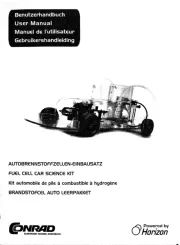
7 December 2024

7 December 2024

7 December 2024

13 Maart 2024
Handleiding Niet gecategoriseerd
- SMAJAYU
- Tributaries
- Revell
- Dnt
- Switel
- Emtec
- Vent-Axia
- Ultimate
- FXLab
- Carnielli
- Ipevo
- Toro
- Unitech
- HeadRush
- Dyson
Nieuwste handleidingen voor Niet gecategoriseerd
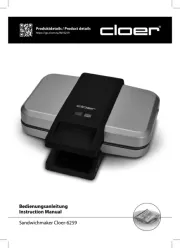
5 Augustus 2025
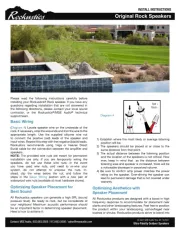
5 Augustus 2025
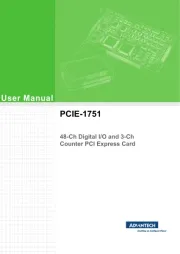
5 Augustus 2025
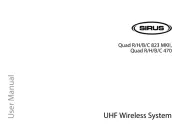
5 Augustus 2025
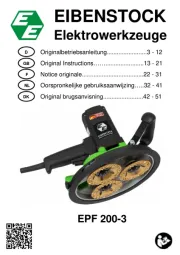
5 Augustus 2025
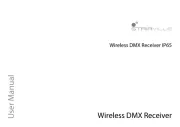
5 Augustus 2025
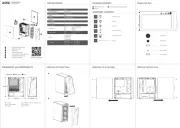
5 Augustus 2025
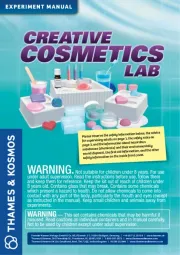
5 Augustus 2025
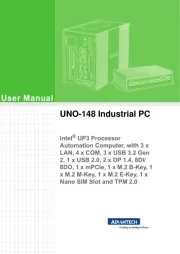
5 Augustus 2025
